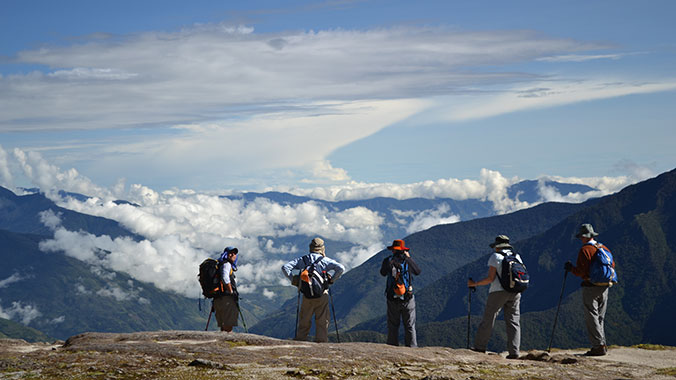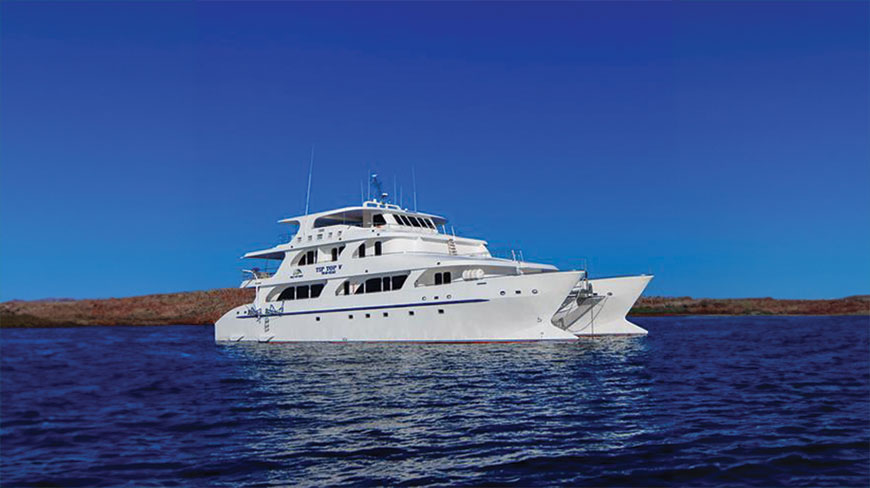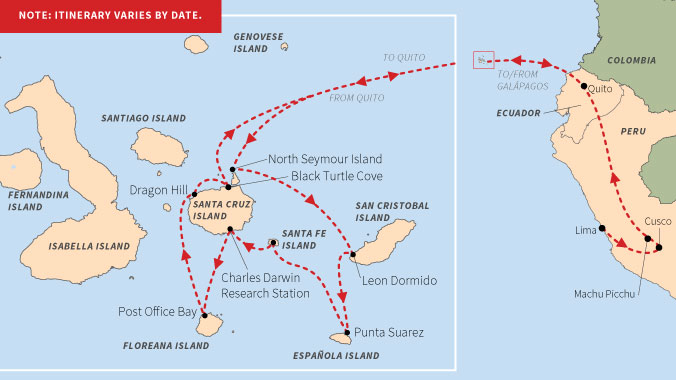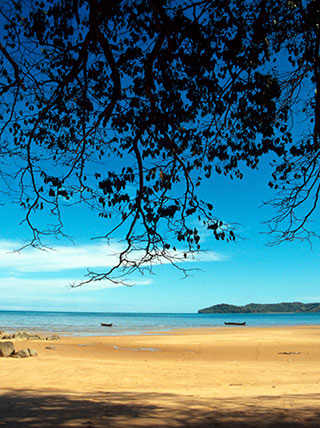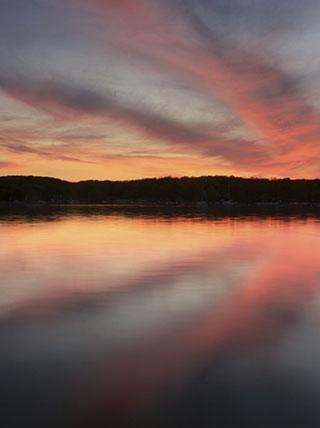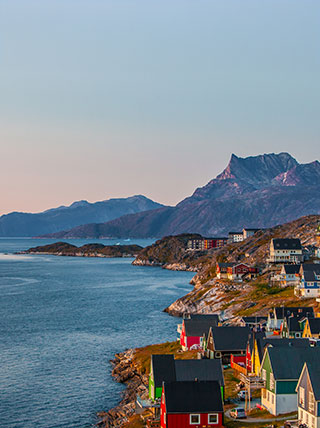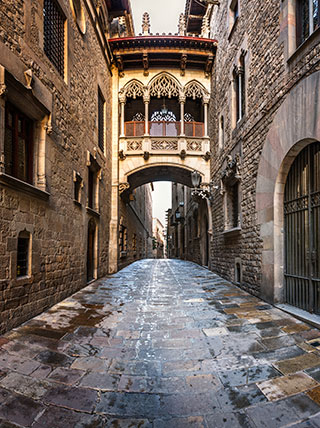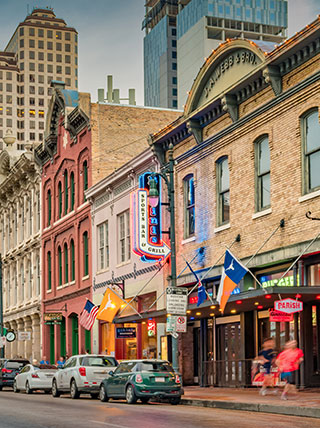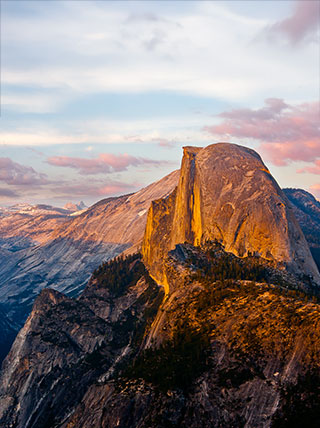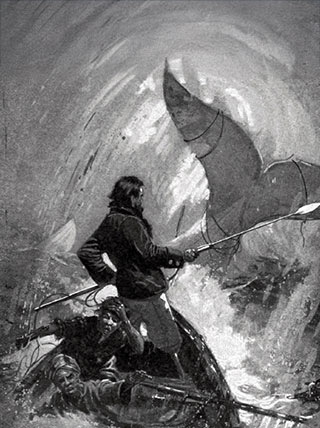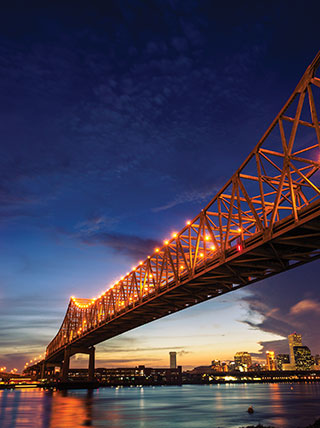Galápagos Islands/Ecuador/Peru
The Best of the Galápagos and Peru: From Enchanted Islands to Machu Picchu
Program No. 18484RJ
The Galápagos and Machu Picchu are two of Latin America’s most renowned icons. Come see for yourself as you discover the unique wildlife and preserved ruins of these two sacred places.
Enroll with Confidence
We want your Road Scholar learning adventure to be something to look forward to—not worry about. Learn more
Protecting the Environment
We offset a portion of the emissions created by your travel. Learn more
Itinerary
While we make every effort to ensure the accuracy of our published materials, programs are typically advertised more than a year prior to their start date.
Read More.
All itineraries and excursions are subject to change. Weather and water conditions may affect the progress of the ship, and we may miss ports if it is not safe to dock. The operators reserve the right to change the content and duration of excursions without prior notice and so the cruise itinerary should always be regarded as provisional. Whenever possible, Road Scholar’s published daily schedule will indicate port arrival and departure times. Prior to departure, if there is a major change, we will make every effort to alert you. For less significant changes, we will update you during orientation. Thank you for your understanding.
Duration
18 days
17 nights
What's Included
42 meals (
16B, 14L, 12D
)
7 expert-led lectures
26 expert-led field trips
5 flights during the program
1 hands-on experience
An experienced Group Leader
16 nights of accommodations
Taxes and customary gratuity
Road Scholar Assurance Plan
Day
1
In Transit, Arrivals in Quito, Check-in
Location:
Quito
Stay:
Sheraton Quito Hotel
Activity Note
Quito elevation 9,223 ft - 9,883 ft. To minimize chances of altitude sickness: get plenty of rest before travel, stay hydrated, avoid alcohol and fatty foods, consume high carbohydrate foods and avoid strenuous exercise at high elevations. This is an international travel day; no meals or program activities are scheduled on this day. Hotel check-in from 3:00 p.m. Remember to bring your nametag (sent previously).
Evening:
At leisure. Check in at the hotel, settle in, and get a good night’s rest for in preparation for the day ahead.
Day
2
Orientation to Quito, UNESCO World Heritage Site
Location:
Quito
Meals:
B,L,D
Stay:
Sheraton Quito Hotel
Activity Note
Getting on/off a bus; driving about 15 miles, approximately 1.5 hours riding time. Walking approximately 1.5 miles; mostly flat terrain, some steps. Layered clothing and comfortable walking shoes suggested for today's activities. This leisurely-paced day in Quito is very important as it will give the group time to acclimate to highland elevations.
Breakfast:
At the hotel.
Morning:
Orientation at 8:00 a.m. We will meet our Quito group leader and fellow Road Scholar participants during a welcome and introduction session at the hotel. We will review the up-to-date daily schedule and any changes, discuss responsibilities, safety guidelines, emergency procedures, and answer any questions you may have. Periods labeled “Free Time” and “At Leisure” offer opportunities to make the program more meaningful and memorable while going out to explore on your own, engaging in available activities independently, making new friends among fellow Road Scholars, or simply relaxing. The Group Leader will always be happy to offer suggestions. Meals on our program feature local cuisine. Please be aware that program activities and scheduled times could change due to local circumstances. In the event of changes, we will alert you as quickly as possible. Thank you for your understanding. At the hotel we'll board a bus and ride to the center of the city for an orientation to Ecuador’s capital. We'll accompany the Group Leader in a walking exploration of the historic UNESCO World Heritage Site, learning about Quito's history from pre-Hispanic times, through the Colonial Period, to the Republican Era. The architecture found in Quito’s historical center is a great example of the Baroque style which is a fusion of Spanish, Moorish, Flemish and Indigenous art. Our field trip will include visits to the Museo Casa del Alabado, La Compañia Church, San Francisco Church and Convent, and the Plaza Grande.
Lunch:
At a local restaurant including an introduction to Ecuadorian food products and typical Ecuadorian cuisine. As a treat, we will learn how to make the city's signature canelazo drink.
Afternoon:
After lunch we will walk a couple of blocks to the Escuela de Arte Quiteño (Quito Art School). The school aims to preserve, through hands-on classes, the artistic techniques and traditions of the Quito School established during the colonial era. During our visit we will learn from a school instructor about the art techniques and theory behind the use of gold leaf before we try our hands at creating our own gilded artwork. In the mid-16th century, Roman Catholic monks began teaching indigenous artisans in Quito the artistic techniques needed to illuminate manuscripts and create religious sculptures, paintings, and other decorative elements that would eventually adorn the city’s many impressive churches and stately homes. While initial efforts attempted to replicate the Baroque styles brought from Spain and Italy, it soon evolved into something uniquely Quiteño; a style that incorporated indigenous imagery and artistic elements pointing to Flemish, Spanish, Italian, and even Moorish aesthetic influences. Late afternoon we’ll ride back to our hotel and attend an expert presentation about Andean culture and European and Indigenous syncretism.
Dinner:
At the hotel.
Evening:
At leisure. Prepare for early morning check-out and our flight to the Galápagos tomorrow. This is a Road Scholar Adventures Afloat program. In addition to lectures and field trips exclusively for our Road Scholar group, you are invited to take advantage of activities and events aboard ship that are separate from the Road Scholar program. The time available in each port is set by the cruise line. Whenever possible, the Road Scholar daily schedule indicates port arrival and departure times (subject to change by the cruise line). This may mean that free time in port is limited. Regardless of the time in port, Road Scholar delivers a robust educational program. All routes, field trips, and excursions are subject to change as weather and sea conditions could affect the progress of the ship, making it run late and/or miss ports if it is not safe to dock. Because of this, the cruise itinerary should always be regarded as provisional. The operators reserve the right to change the content of field trips and excursions without prior notice. In the event of changes, we will alert you as quickly as possible.
Day
3
Baltra Flight, Board Yacht, Bachas Beach
Location:
Galápagos Islands
Meals:
B,L,D
Stay:
Tip Top V
Activity Note
Flight to/from Galapagos is approximately 2 hours and makes a stop in Guayaquil; passengers remain on board. This flight allows each person to bring a 50 lb checked bag/suitcase, plus a carry on. Schedule is representative; actual cruise itinerary and islands visited are determined by the National Park. The park reserves the right to change cruise itineraries without prior notice.
Breakfast:
Early at the hotel.
Morning:
After check-out, we’ll board the bus and ride to the airport to check in for our flight to the Galápagos Islands. Our Group Leader will assist with check-in procedures and then we'll proceed through security and get ready to embark on our flight. Upon arrival to the Galápagos Islands, we'll deplane and walk across the tarmac to the airport building and complete immigration procedures. After collecting our luggage, we will meet our naturalist Galápagos Group Leader and board a bus that will drive us to the pier, followed by a short ride to the yacht on a panga, or tender. After attending a welcome orientation and a safety drill, the yacht will set sail to the first visitor site on our cruise.
Lunch:
Aboard the yacht.
Afternoon:
Wet landing at Playa las Bachas for a field trip to a flamingo lagoon. Apart from being an important nesting site for sea turtles (Chelonia mydas), Playa las Bachas is also a great location for viewing migratory and aquatic birds. The name of this location dates back to WWII, when the U.S. army abandoned two barges on the beach. Locals found it hard to pronounce the word "barges" in English; over time, the common mispronunciation of the word became the norm, resulting in the name Playa las Bachas. Opportunity for snorkeling and/or swimming before returning to our vessel.
Dinner:
Aboard the yacht, after enjoying a welcome cocktail with the crew.
Evening:
Orientation to the next day’s activities, followed by time at leisure.
Day
4
Genovesa, Prince Phillip's Steps, Darwin Bay
Location:
Galápagos Islands
Meals:
B,L,D
Stay:
Tip Top V
Activity Note
Prince Philip's Steps: difficult dry landing onto rocky shore; ascending/descending a steep stone staircase (about 40 steps) carved into the approximately 82-foot stone cliff. The staircase has a wooden railing; individual steps are irregular in both shape and size and oftentimes slippery. Darwin Bay: wet landing, easy to moderate hike on coral sand and slabs of lava. The trail is approximately 1 mile in length. When the tide is high, parts of the trail might be covered in water.
Breakfast:
Aboard the yacht.
Morning:
Dry landing at Prince Phillip’s Steps (also known as El Barranco). After climbing the stone steps, we will walk on local trails in search of local birds. The Prince Phillip’s Steps visitor site includes a steep stone staircase and a rocky trail that extends for approximately 1 mile through squadrons of frigate birds and Red-billed Tropicbirds. Red-footed Boobies perch on the branches of Palo Santo trees and Storm Petrels, which serve as prey for Short-eared Owls, are found in the open lava fields at the end of the trail. We'll make our way back to the yacht in time for lunch.
Lunch:
Aboard the yacht.
Afternoon:
After a panga ride and wet landing on a sand and coral beach, we will accompany our naturalist leader on a walking exploration of Darwin Bay in search of pelagic species. The island’s volcanic sea cliffs and salt bush offer a prime habitat for the birds of the Galápagos. In March and April, male frigate birds begin courtship rituals, showing off their inflated red pouches. By August, the island is full of Nazca Boobies (Masked Boobies) and Red-footed Boobies, and Swallow-tailed Gulls can be found nesting. Darwin Bay is the caldera of an extinct volcano which has been partially eroded, and offers superb swimming and snorkeling. We’ll then return to the yacht.
Dinner:
Aboard the yacht.
Evening:
Lecture and orientation to the next day's activities. (Please note that the day/time of lectures is subject to change)
Day
5
South Plaza, Santa Fe Island
Location:
Galápagos Islands
Meals:
B,L,D
Stay:
Tip Top V
Activity Note
South Plaza: dry landing and moderate difficulty due to slippery rocks and uneven trail conditions. Santa Fe: wet landing and moderate difficulty due to rocky, uneven trail conditions.
Breakfast:
Aboard the yacht.
Morning:
Following our dry landing on Plaza Sur (South Plaza) Island we will embark on a walking field trip on rocky trails in search of local flora and fauna. As we follow the trail to a cactus forest, we hope to get a closer look at land iguanas and their habitat before moving on in search of local sea lion colonies. Sea lions usually give birth from August to November, and females begin mating within weeks of having their young. South Plaza is also a great place for viewing seabirds in flight including Red-billed Tropicbirds, frigatebirds, pelicans, Swallow-tailed Gulls, and other pelagic species. Afterwards, we will return to the yacht.
Lunch:
Aboard the yacht.
Afternoon:
We will make a wet landing on a small beach on Santa Fe Island. As we explore the looping island trail near the beach we’ll be on the lookout for Opuntia cacti, Galapagos hawks, and Santa Fe iguanas (endemic). Before returning to the vessel, we will have an opportunity to swim, snorkel, and/or kayak. This spot is one of the best locations for swimming with sea lions!
Dinner:
Aboard the yacht.
Evening:
Orientation to the next day’s activities, followed by time at leisure.
Day
6
Highlands, Wild Tortoises, Charles Darwin Station
Location:
Galápagos Islands
Meals:
B,L,D
Stay:
Tip Top V
Activity Note
Santa Cruz Highlands: dry landing and moderate to difficult trail conditions due to rocky, uneven (and possibly muddy) trails. Driving approximately 1.5 hours throughout the day.
Breakfast:
Aboard the yacht.
Morning:
We will tender ashore to Santa Cruz Island, then we'll board a bus and ride to the highlands. Our naturalist will lead us on a walking field trip on local trails and lightly wooded areas to view native forests and the Twin Craters. Then we'll drive to a nearby farm and walk on grassy trails in search of giant tortoises living in the wild. We'll learn more about their diet, breeding habits and overall biology as we observe them in their natural habitat. In addition to giant tortoises, Santa Cruz is home to several species of Darwin's finches as well as Yellow Warblers, Galápagos Rails and Paint-billed Crakes. A dramatic change in vegetation zones can be seen as one travels into the highland region of the island.
Lunch:
At a local ranch in the highlands.
Afternoon:
Our bus will deliver us to Puerto Ayora in preparation for our field trip to the Fausto Llerena Center inside the Charles Darwin Research Station. Our naturalist will lead us on foot through the facility and introduce us to the station's mission and its tortoise breeding projects. The Charles Darwin Research Station (CDRS) is a biological research station based on Santa Cruz Island and operated by the Charles Darwin Foundation. The organization plays an important role in scientific research, environmental education, and conservation efforts in the islands. Late afternoon return to the yacht.
Dinner:
Aboard the yacht.
Evening:
Lecture and orientation to the next day's activities. (Please note that the day/time of lectures is subject to change)
Day
7
Floreana, Baroness Point & Post Office Bay, Punta Cormorant
Location:
Galápagos Islands
Meals:
B,L,D
Stay:
Tip Top V
Activity Note
Post Office Bay: wet landing and easy/flat trail conditions. Mirador la Baronesa: walking on trails, including uphill sections. Punta Cormorant: wet landing and easy trail conditions. Asilo de la Paz: getting on/off a bus; driving about 12 miles roundtrip; walking on undulating grassy trails and rocky terrain.
Breakfast:
Aboard the yacht.
Morning:
After a wet landing we'll hike on an uphill trail to the lookout point known as Mirador de la Baronesa. The location was named after one of Floreana's early residents, the Baroness Eloisa Von Wagner. We'll stop at the mirador for a chance to enjoy the stunning views of the bay before continuing on to the ruins of her home and learn about the island's early settlers. Then we'll return to our pangas and journey to Post Office Bay. Our half-mile walk at Post Office Bay will begin with a wet landing on the sandy beach and then a visit to the Post Office Barrel. The famous Post Office Bay can be found on the northern side of Floreana Island. This is the site where whalers used to “mail” their correspondence. A barrel was used as a makeshift postbox which held letters from sailors across the globe. If a passing ship happened to be heading where the mail was addressed to, the captain would collect and deliver it. Although the original barrel is no longer in use, the system still works as visitors continue to collect and drop off their letters and postcards. Concluding our activities at Post Office Bay we will return to the yacht and set sail to Puerto Velasco. We'll tender ashore to the port, then board a bus that will take us on a scenic ride into the highlands to the historic Asilo de la Paz. We will delve deeper into the human history of the island as we accompany our naturalist along grassy trails and rocky outcroppings to view the cave system and freshwater spring once used by pirates and by Floreana's first settlers. An Irish sailor--Patrick Watkins--is believed to have been Floriana's first resident after he was stranded on the island in 1807. Watkins' colorful history is just one of many "stranger than fiction" accounts tied to the island's first inhabitants. After completing our explorations at Asilo de la Paz, we'll ride the bus back to the port and return to the yacht by panga.
Lunch:
Aboard the yacht.
Afternoon:
We’ll navigate by panga to Floreana and make a wet landing on the green beach at Punta Cormorant. During our walking explorations we hope to observe shorebirds and flamingos at the local lagoon and spot endemic plants such as Scalesia vellosa andLecocarpus pinaffitidus. We will most likely have the chance to spot sea lions lounging lazily on the beach. The beach’s unusual color is a result of the olivine crystals present in the sand. From here, a trail leads us to a lagoon where flamingos can be found wading with other birds such as oystercatchers, and Black-necked Stilt. A white sandy beach near the lagoon is good for swimming and is a known nesting site for green sea turtles. Around January, pregnant females come ashore at night to dig nests and lay eggs (between 75-100 eggs per nest) before returning to sea. The eggs begin hatching in April and May. Depending on weather/sea conditions, we’ll either navigate to Champion Islet or to Devil’s Crown to enjoy swimming and snorkeling before returning to the yacht.
Dinner:
Aboard the yacht.
Evening:
Orientation to the next day’s activities, followed by time at leisure.
Day
8
Española, Punta Suarez, Gardner Bay, Osborn & Gardner Islets
Location:
Galápagos Islands
Meals:
B,L,D
Stay:
Tip Top V
Activity Note
Punta Suarez: Punta Suarez: dry landing and difficult trail conditions due to rocky, uneven terrain; hiking up to 2 miles, approximately 2 hours. Gardner Bay: wet landing and easy, sandy trail conditions. Osborn and Gardner Islets: panga ride.
Breakfast:
Aboard the yacht.
Morning:
We’ll make a dry landing at Punta Suarez in preparation for an estimated 2-hour hike. Our walking exploration will take us over loose boulders and challenging rocky ground as we make our way to view nesting boobies and the famous blowhole. Punta Suarez is home to the Galápagos Hawk and the red form of the marine iguana. In January, the iguanas change color, adopting bright hues that are attractive to potential mates. Visitors have a good chance of seeing Blue-footed Booby chicks around October. Española is also the breeding site of most of the archipelago's Waved Albatrosses, so be on the lookout for these large and graceful flyers! Albatrosses display courtship behavior in April, nest and lay eggs in May, and by December the young fledge and leave for a few months before returning in March. After our explorations, we will return to the yacht.
Lunch:
Aboard the yacht.
Afternoon:
Following a panga ride to Española, we will make a wet landing at the white sand beach in Gardner Bay. A short walk and swimming/snorkeling activities off the beach will give us the opportunity to relax in one of the islands' most beautiful locations. Gardner Bay’s white beach is usually dotted with sunbathing sea lions. From May to January the sea lion population increases with the arrival of the mating season. The soft sand and clear waters make this a perfect location for snorkeling and swimming. In January, green sea turtles steal ashore under cover of night to dig pits and lay eggs before making their way back to sea. Eggs hatch from April to May. We'll navigate around Osborn and Gardner Islets on our way back to the yacht.
Dinner:
Aboard the yacht.
Evening:
Orientation to the next day’s activities, followed by time at leisure.
Day
9
Cerro Brujo, Kicker Rock, Isla Lobos
Location:
Galápagos Islands
Meals:
B,L,D
Stay:
Tip Top V
Activity Note
Leon Dormido (Kicker Rock): no landing. Cerro Brujo: wet landing and easy walking on sandy trails.
Breakfast:
Aboard the yacht.
Morning:
After making a wet landing on the beach at Cerro Brujo, we will accompany our naturalist on an exploratory walk along a coral sand beach that is typically frequented by lively sea lions. Other residents we hope to spot include Brown Pelicans, marine iguanas, and Blue-footed Boobies. This is one of the first locations visited by Charles Darwin in the Galápagos during his scientific expedition aboard the HMS Beagle (1831-1836). We'll return to the yacht and navigate around Leon Dormido (a.k.a. Kicker Rock) to get a closer look at the iconic stone formation and search for nesting sea birds. The tuff-rock, which rises almost 500 feet from the ocean, has eroded to give it the shape seen as a shoe or sleeping lion. We will be on the lookout for Blue-footed Boobies, Masked Boobies, and frigatebirds dotting its cliffs.
Lunch:
Aboard the yacht.
Afternoon:
We'll board pangas and navigate around Isla Lobos in search of sea birds and sea lions often seen along the rocky coastline. There will be an opportunity to snorkel before heading back to the yacht. We will be on the lookout for sea turtles, rays, and frolicking sea lions. Next, we'll sail to Puerto Baquerizo Moreno on San Cristobal Island. Following our dry landing we will accompany our naturalist on a walking exploration of the town. At the end of our activities we'll board pangas and make our way back to the yacht.
Dinner:
Aboard the yacht.
Evening:
Orientation of next day’s activities, followed by time at leisure. Prepare for final disembarkation in the morning.
Day
10
Black Turtle Cove, Fly to Lima via mainland Ecuador
Location:
Lima
Meals:
B,D
Stay:
Casa Andina Select Miraflores
Activity Note
Black Turtle Cove: no landing, dinghy ride. Flight to mainland Ecuador is approximately 2 hours; flight to Lima is under 2 1/2 hours. There is a 50 lb weight limit for checked luggage on the flights to and from the islands.
Breakfast:
Aboard the boat.
Morning:
Our Galápagos naturalist will lead us on a dinghy ride through the mangroves at Black Turtle Cove, located off the northern coast of Santa Cruz Island. As we maneuver around the inlet and into the cove, we’ll shut down the engines and quietly glide along looking for birds and marine life. The experience will be enhanced by our naturalist's expert commentary and spotting skills. If lucky, we might get to see white-tipped sharks, sea turtles and a variety of rays. Return to the yacht and gather your personal belongings in preparation for final disembarkation. We’ll exchange goodbyes with our Galápagos Group Leader at the airport and complete check-in procedures for our flight to the mainland.
Lunch:
On your own. The airport offers a variety of food options like sandwiches and empanadas.
Afternoon:
We'll arrive to the mainland in the late-afternoon and retrieve our luggage before checking in for our flight to Lima, Peru. A Road Scholar representative will assist us with the connecting flight.
Dinner:
At the airport. Please note that depending on flight times, the meal locations and times might change. The Road Scholar representative will advise at the site.
Evening:
Upon arrival in Lima meet the Road Scholar representative and transfer to the hotel for check-in.
Day
11
Larco Museum, Peru Cuisine Presentation, Malecon
Location:
Lima
Meals:
B,L
Stay:
Casa Andina Select Miraflores
Activity Note
Getting on/off a bus; driving about 21 miles, approximately 2 hours riding time. Walking up to 1 mile; flat paved surfaces, some steps.
Breakfast:
At the hotel.
Morning:
After breakfast, we will review the up-to-date daily schedule and any changes, discuss responsibilities, safety guidelines, emergency procedures, and answer any questions you may have. At the hotel, we’ll learn about Peru’s ancient cultures during an introductory presentation by a local archeologist. Then we will board a bus and ride to the Larco Museum to delve deeper into the ancient civilizations discussed during our lecture. After we disembark we’ll set off on foot with a local expert who will lead us through the exhibits and provide historical insights. The privately funded Larco Museum, also known as Museo Rafael Larco Herrera, holds one of the world’s largest collections of Peruvian pre-Colombian artifacts and showcases pieces from lesser-known Peruvian cultures such as the Moche, Chimú, and Nazca, as well as the famous Inca. Its name honors the founder’s father, Don Rafael Larco Herrera, a well-known collector of pre-Columbian artifacts and archaeology aficionado. The museum is housed in an 18th century mansion in the Pueblo Libre District of Lima and has 6 exhibit halls, 11 storage rooms, a vault for gold and silver exhibits, a terrace with large stone displays, and a garden with a patio.
Lunch:
Welcome lunch at local restaurant including a Peruvian Food presentation.
Afternoon:
We’ll climb aboard the bus and ride to Miraflores to explore the Malecon and enjoy some typical Peruvian snacks, including the deliciously fruity and refreshing cremolada. At Miraflores we will participate in a favorite Limeño pastime as we walk along the landscaped coastal paths of the Malecon and pause to soak up the ocean breeze and beautiful clifftop views. Then we will hop back on the bus and ride to Kennedy Park, known for its great street food, to sample some more local treats such as picarones (picarón, singular). Peruvians’ beloved fried pastry is made with sweet potato and/or pumpkin, then deep fried and topped with chancaca syrup. At the end of our explorations we will climb aboard the bus and ride back to the hotel.
Dinner:
On your own to explore the local fare.
Evening:
At leisure. Prepare luggage for check out the following morning.
Day
12
Fly to Cusco, Transfer to Sacred Valley, Pisac Market
Location:
Sacred Valley
Meals:
B,L,D
Stay:
Sonesta Posada del Inca - Yucay
Activity Note
Getting on/off an airplane; flight to Cusco is approximately 1.5 hours; one 50 lb checked bag allowed. Getting on/off a bus; driving about 45 miles, approximately 3 hours riding time. Walking up to 1 mile, flat terrain. Cusco elevation 11,000 ft & 9,375 ft in Yucay. To minimize your chances of experiencing altitude sickness, try to get plenty of rest before you travel, stay hydrated, avoid alcohol and fatty foods, eat high carbohydrate foods, and avoid strenuous exercise at high elevations.
Breakfast:
At the hotel.
Morning:
We’ll check out and depart to the airport for our morning flight to Cusco. We'll enjoy a traditional Inca welcome, with some hot coca tea, at the Cusco airport. Then, we'll board the bus and begin our transfer to the Sacred Valley with an en route visit to the Awanakancha Alpaca Center. The Awankancha Alpaca Center is a living museum where visitors can see llamas, alpacas and vicuna. A demonstration will show how the wool from these South American animals is used to make woven textiles.
Lunch:
At a restaurant en route.
Afternoon:
We'll ride to Pisac for a field trip to its market. The rustic Andean village grew up at the foot of the original Inca settlement and has since become known for its market and nearby ruins. The artisan market hosts hundreds of vendors offering ceramics, clothing and knitted goods including those made of alpaca, jewelry, scarves, and trinkets of many kinds. We will return to our bus and ride to the hotel for check in.
Dinner:
At the hotel.
Evening:
Time at leisure to enjoy the grounds and gardens of this former monastery.
Day
13
Ollantaytambo Ruins, Chinchero Town Weaving
Location:
Sacred Valley
Meals:
B,L,D
Stay:
Sonesta Posada del Inca - Yucay
Activity Note
Getting on/off a bus; driving about 71 miles, approximately 2.5-3 hours riding time. Ollantayambo ruins are steep with about 100 stone steps to the top of the fortress at an altitude of 9,100 feet. Walking about 1/2 mile; sloping, cobblestone paths; altitude makes more challenging. Elevations range from 9,400 feet in Yucay to 12,500 feet in Chinchero.
Breakfast:
At the hotel.
Morning:
We will ride to the town of Ollantaytambo in preparation for a field trip to its Inca ruins. Our Group Leader will provide historical context while we walk through the town and examine its ancient ruins. We’ll learn about the engineering genius of the Inca demonstrated by the extensive terracing and irrigation present at the site. Running water still flows through the town in ancient aqueducts. The Inca emperor Pachacuti built Ollantaytambo in the 15th century as part of his royal estate. This is where the Inca retreated to make their last stand in the highlands against the Spanish.
Lunch:
At a local restaurant.
Afternoon:
Next, we will ride to Chinchero town and visit a weaving cooperative. Here we will meet with locals and learn about traditional weaving styles and techniques. Weaving is a way of life in Chinchero, as important for preserving ancient traditions as it is for earning a livelihood. Located in the Peruvian Andes on the Inca road between Cusco and Machu Picchu, Chinchero was an early Inca center built by Emperor Tupa Inca as his country estate. During Inca reign, textiles were woven and offered to mark special occasions, from peace treaties and sacrifices to marriage ceremonies and puberty rites. In Chinchero, children grow up playing with their mother's spindle and loom. By age six or seven, most children learn to weave by watching their elders. They begin by weaving jakimas, or narrow ribbons, before moving on to more complicated pieces. On our way back to the hotel, we'll pay special attention to the ancient terraces and other evidences of highland farming seen on the way, as we learn from a local expert about the agricultural practices of the Incas.
Dinner:
At the hotel.
Evening:
At leisure. Prepare for check out and transfer tomorrow morning. There is a weight limit for luggage on the Peru Rail transfer to Machu Picchu. Plan to pack an overnight bag for one night in the Machu Picchu area. This bag must weigh no more than 11 pounds and measure no more than 62 inches /157 cm (length, plus height, plus width). Excess luggage can be left with the Road Scholar driver and vehicle, and will be secured until your return to Cusco.
Day
14
Aguas Calientes, Machu Picchu, UNESCO World Heritage Site
Location:
Aguas Calientes - Machu Picchu
Meals:
B,L
Stay:
El MaPi Hotel
Activity Note
Getting on/off a train to Aguas Calientes; approximately 1.5 hours rail time. Getting on/off a bus (Aguas Calientes Town - Machu Picchu ruins); driving about 4 miles each way; approx. ½ hour riding on mountain switchbacks. Walking and standing at least 3 hours; dirt paths and grass; many staircases and lack of shade. Wear or bring long-sleeved shirt for insect protection. Elevation at Aguas Calientes is approx. 6,695 ft.
Breakfast:
Early, at the hotel.
Morning:
We will ride to the Ollantaytambo train station and board a train to Aguas Calientes Station en route to Machu Picchu. This scenic journey by rail follows the meandering path of the Urubamba River and provides spectacular views of the snowcapped Andes. Our Group Leader will provide commentary as we go. We will disembark at Aguas Calientes Station (6,693 feet elevation).
Lunch:
At a local restaurant.
Afternoon:
We will walk to a local bus stop then climb aboard a bus that will take us up the mountain to the Machu Picchu ruins. Then we will spend the afternoon walking in Machu Picchu, exploring in and around the ruins with a local expert. NOTE: Seating on the buses is on a “first come, first served” basis. We do not have a set departure time and will wait in line to board the bus. The modern day discovery of this ancient and incredible Inca city is credited to Hiram Bingham, a Yale graduate and former U.S. senator who was fascinated with Inca archaeology. While he was searching for Vilcabamba and Vitcos, Bingham “found” Machu Picchu with the help of a local farmer who knew about the ruins. Bingham hypothesized that the site was a “citadel” existing for strategic and defense purposes. He also speculated that the site was a refuge for Cusco’s Virgins of the Sun, based upon the finding of skulls there, although not scientifically classified as female. Breakthroughs in archaeology since 1985 have largely supported the emerging view of Machu Picchu as a royal estate. Archaeologists believe the site was built around 1450-1460 at the orders of Inca ruler Pachacutec Inca Yupanqui. It is estimated that the ruler lived here with more than 750 laborers, servants, family and relatives, and priests. Machu Picchu was built, flourished, and fell into demise within a period of only 100 years. The reason for its disuse remains a mystery, although archaeologists speculate it may have had to do with the Spanish conquest. We will ride back to Aguas Calientes and then walk to our hotel.
Dinner:
On your own for a chance to explore local fare.
Evening:
Time at leisure.
Day
15
Orientation to Aguas Calientes, Train & Bus to Cusco
Location:
Cusco
Meals:
B,L
Stay:
Casa Andina Premium – Cusco
Activity Note
Participants who plan to return to Machu Picchu this morning should purchase their entrance tickets in advance. Park tickets are sold in Aguas Calientes, but availability is not guaranteed. Please see the program notes section of your Road Scholar preparatory materials for more details.
Breakfast:
At the hotel.
Morning:
We'll accompany our Group Leader on an exploratory walk around the town of Aguas Calientes. Next, we'll visit the local market.
Lunch:
At a local restaurant.
Afternoon:
Transfer by bus to the train station to board the early afternoon train to Ollantaytambo Station. Arriving at the Ollantaytambo Station, we'll board a bus and transfer to Cusco. Once in Cusco we'll check in at the hotel. The rest of the day will be free to enjoy Cusco at your own pace.
Dinner:
On your own for a chance to explore local fare.
Evening:
At leisure and to perhaps enjoy a walk around the main square of historic Cusco, the Plaza de Armas.
Day
16
Sacsayhuaman Ruins and Introduction to Cusco
Location:
Cusco
Meals:
B,D
Stay:
Casa Andina Premium – Cusco
Activity Note
Getting on/off a bus; driving about 8 miles, approximately 1/2 -1 hour riding time. Walking up to 2 miles; dirt paths, undulating grassy terrain, cobblestones. Elevation in Cusco is approx. 11,000 ft.
Breakfast:
At the hotel.
Morning:
We’ll board the bus and ride to the Sacsayhuaman Ruins. Once there, we’ll accompany our Group Leader on an exploratory walk through the historic site. The fortress of Sacsayhuaman forms the head of the Puma design of old Cusco. It is a wonder of technical achievement and a testament to human will. It is a mystery how it was constructed, since the stones are not found in the region, and most of the blocks weigh more than a ton. The largest rock weighs more than 300 tons. Sacsayhuaman is constructed of huge polygonal blocks which interlock with one another. The stones are so precisely placed that a knife blade cannot be inserted between them. Some sections of the ruins were built by the Killke culture which occupied the region from 900 to 1200 A.D. and was expanded and added to with the arrival of the Incas. We will reboard the bus and ride back to Cusco in preparation for a walking exploration of the city center. Cusco is a city of great historical value as is noted in its inscription as a UNESCO World Heritage Site: “The City of Cuzco provides a unique testimony to the urban and architectural achievements of important political, economic and cultural settlements during the pre-Columbian era in South America. It is a representative and exceptional example of the confluence of two distinct cultures; Inca and Hispanic, which through the centuries produced an outstanding cultural syncretism and configured a unique urban structure and architectural form.”
Lunch:
On your own.
Afternoon:
Enjoy some free time to explore Cusco before reconvening at the appointed time for a pre-dinner presentation by a local expert on the history of Inca and Andean musical instruments.
Dinner:
At a local restaurant. Share favorite experiences with new Road Scholar friends during our farewell dinner.
Evening:
At leisure.
Day
17
Program Concludes, Flights to the U.S.
Location:
In Flight
Meals:
B,L
Activity Note
Getting on/off bus; driving about 5 miles, approximately 1/2 hour riding time. Getting on/off an airplane; flight from Cusco to Lima is approximately 1.5 hours; one 50 lb checked bag allowed. There is no hotel stay for this day. Please book flights departing Lima after 11:00PM. If you have chosen a morning flight out of Lima and need hotel accommodations, please contact the program coordinator at 1-800-866-7111 toll free or roadscholarprograms@holbrooktravel.com to book these services.
Breakfast:
At the hotel.
Morning:
Free time. Use this opportunity to rest, finish packing, or perhaps take a final stroll along Sol Avenue and the historic Plaza de Armas.
Lunch:
At a café in the main plaza where you can enjoy the colonial architecture of the city.
Afternoon:
We will transfer to the airport for our flight to Lima and say goodbye to our group leader. Upon arrival to Lima we will connect with our evening flights out of Jorge Chávez International Airport to the U.S. This concludes our program. If you are returning home, safe travels. If you are staying on independently, have a wonderful time. If you are transferring to another Road Scholar program, detailed instructions are included in your Information Packet for that program. We hope you enjoy Road Scholar learning adventures and look forward to having you on another rewarding program in the future. Don’t forget to like our Facebook page and follow us on Instagram. Best wishes for all your journeys!
Dinner:
On your own.
Day
18
Arrive to the U.S.
Location:
In Flight
Please Note:
This program has itinerary variations on certain dates.
Dec 02, 2026 - Dec 19, 2026 (Quito to Cusco)
Jul 23, 2025 - Aug 09, 2025 (Quito to Cusco)
Jul 30, 2025 - Aug 16, 2025 (Quito to Cusco)
Aug 21, 2025 - Sep 06, 2025 (Lima to Quito)
Sep 03, 2025 - Sep 20, 2025 (Quito to Cusco)
Sep 11, 2025 - Sep 27, 2025 (Lima to Quito)
Sep 25, 2025 - Oct 11, 2025 (Lima to Quito)
Sep 26, 2025 - Oct 13, 2025 (Quito to Cusco)
Oct 08, 2025 - Oct 25, 2025 (Quito to Cusco)
Oct 15, 2025 - Nov 01, 2025 (Quito to Cusco)
Oct 16, 2025 - Nov 01, 2025 (Lima to Quito)
Nov 06, 2025 - Nov 22, 2025 (Lima to Quito)
Nov 19, 2025 - Dec 06, 2025 (Quito to Cusco)
Nov 20, 2025 - Dec 06, 2025 (Lima to Quito)
Dec 03, 2025 - Dec 20, 2025 (Quito to Cusco)
Dec 08, 2025 - Dec 25, 2025 (Quito to Cusco)
Jan 07, 2026 - Jan 24, 2026 (Quito to Cusco)
Jan 14, 2026 - Jan 31, 2026 (Quito to Cusco)
Jan 28, 2026 - Feb 14, 2026 (Quito to Cusco)
Feb 11, 2026 - Feb 28, 2026 (Quito to Cusco)
Feb 25, 2026 - Mar 14, 2026 (Quito to Cusco)
Mar 04, 2026 - Mar 21, 2026 (Quito to Cusco)
Mar 11, 2026 - Mar 28, 2026 (Quito to Cusco)
Mar 12, 2026 - Mar 28, 2026 (Lima to Quito)
Apr 23, 2026 - May 09, 2026 (Lima to Quito)
May 14, 2026 - May 30, 2026 (Lima to Quito)
May 21, 2026 - Jun 06, 2026 (Lima to Quito)
May 28, 2026 - Jun 13, 2026 (Lima to Quito)
Jun 17, 2026 - Jul 04, 2026 (Quito to Cusco)
Jul 22, 2026 - Aug 08, 2026 (Quito to Cusco)
Aug 05, 2026 - Aug 22, 2026 (Quito to Cusco)
Sep 23, 2026 - Oct 10, 2026 (Quito to Cusco)
Sep 30, 2026 - Oct 17, 2026 (Quito to Cusco)
Oct 07, 2026 - Oct 24, 2026 (Quito to Cusco)
Nov 04, 2026 - Nov 21, 2026 (Quito to Cusco)
Dec 02, 2026 - Dec 19, 2026 (Quito to Cusco)
Dec 2 - Dec 19, 2026 Itinerary Differences:
This program date starts in Quito and ends in Lima and sails on the Tip Top V. Cruise Itinerary varies by date. Actual cruise itinerary and islands visited are assigned by the Galápagos National Park and can be changed without prior notice.

